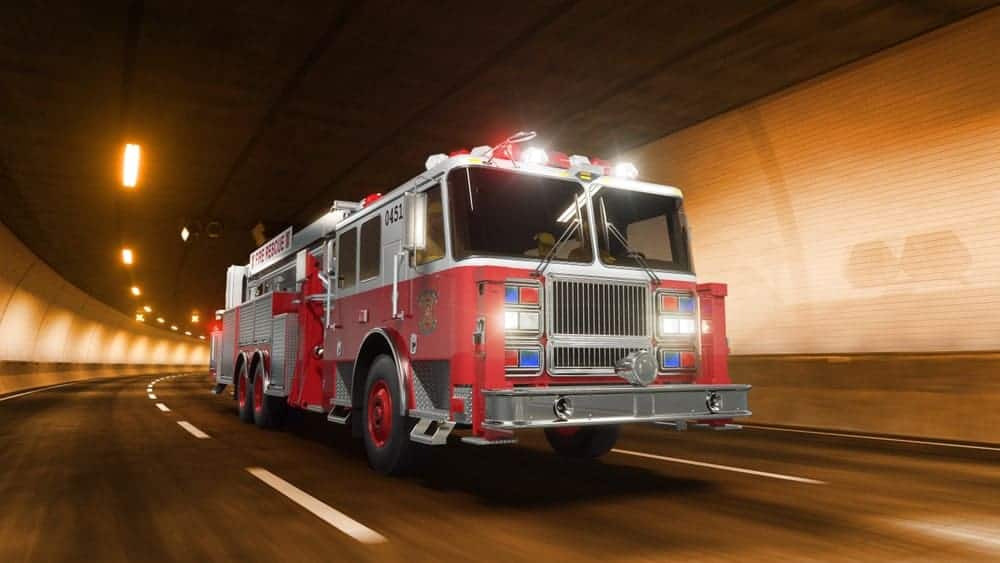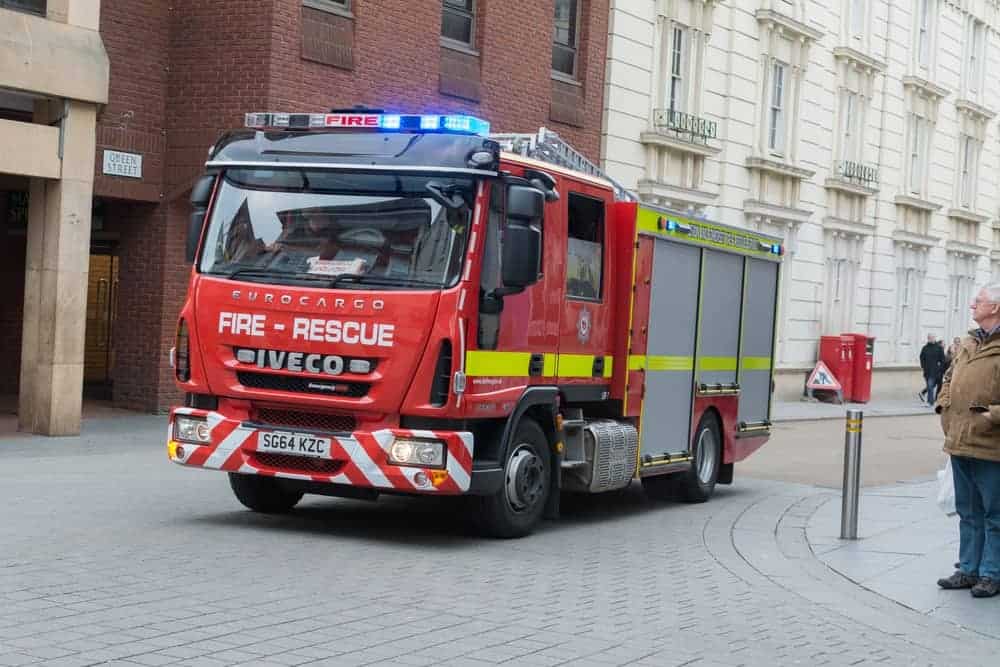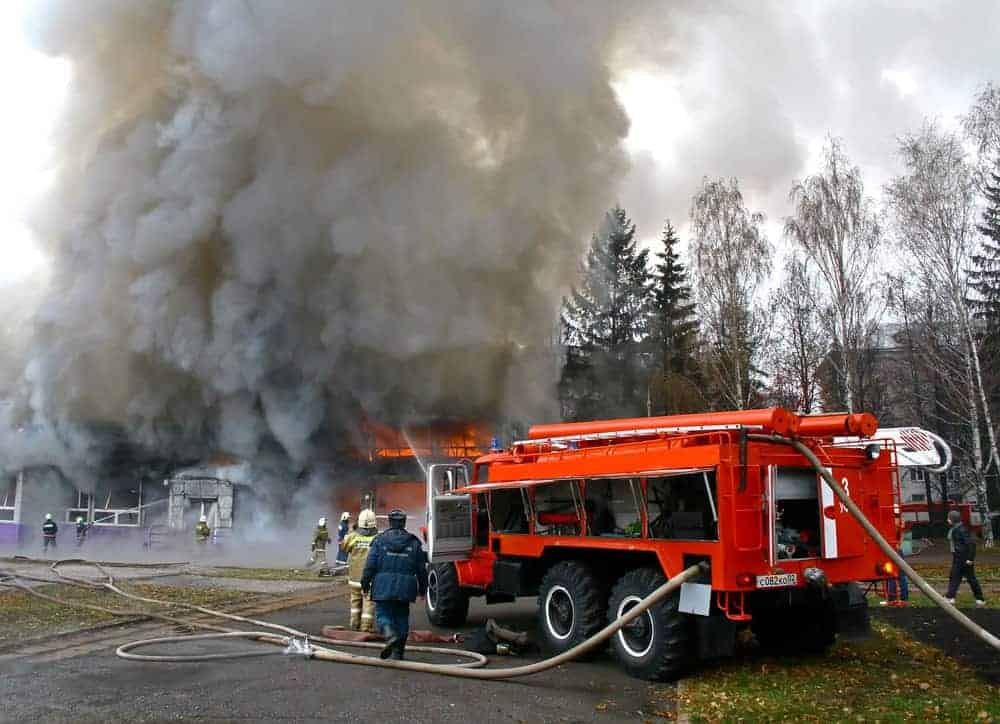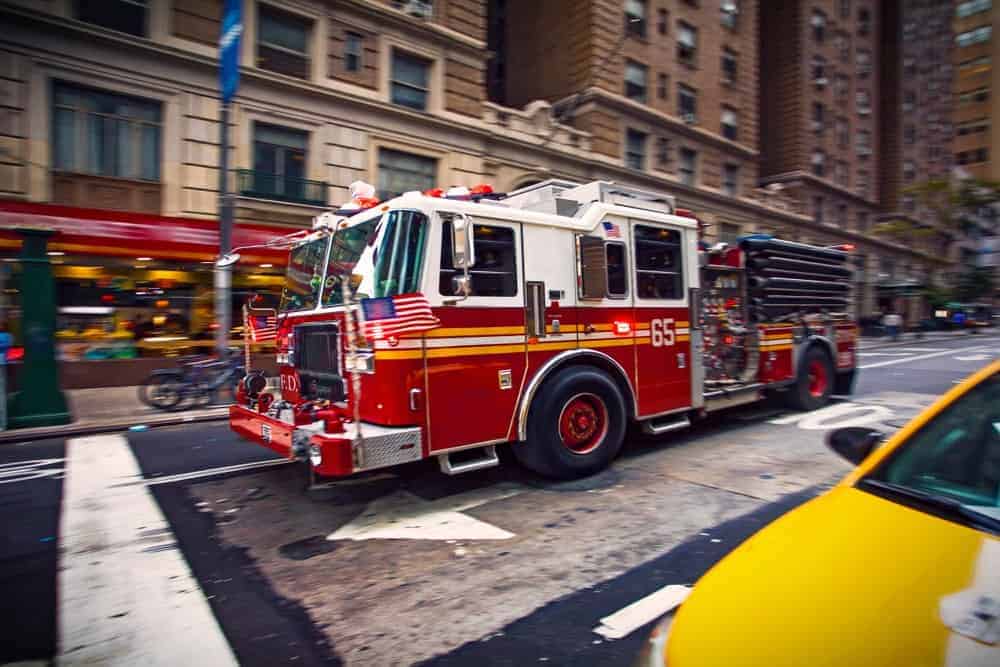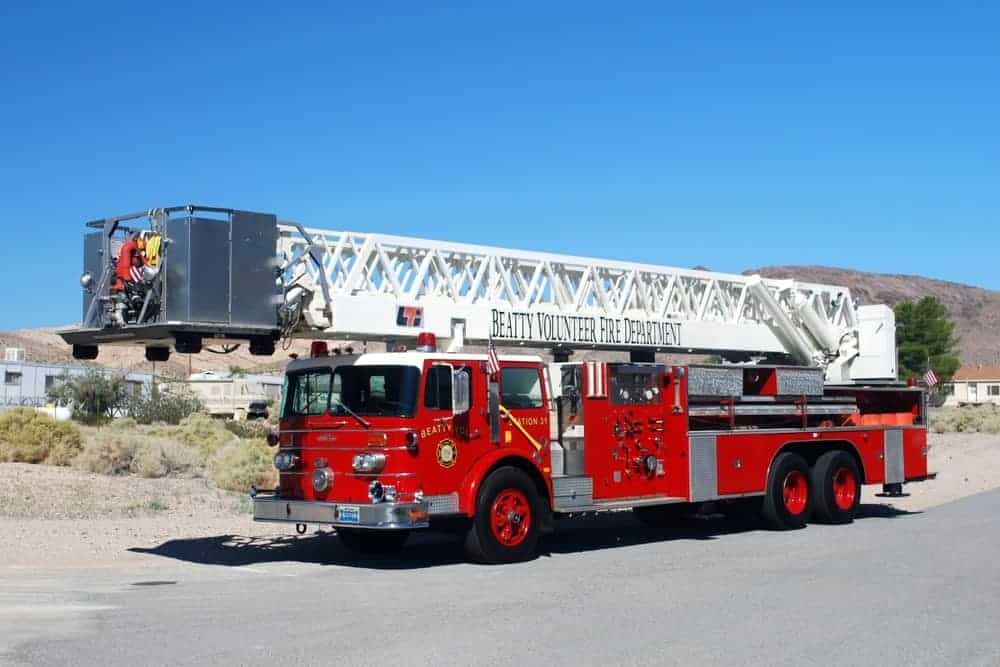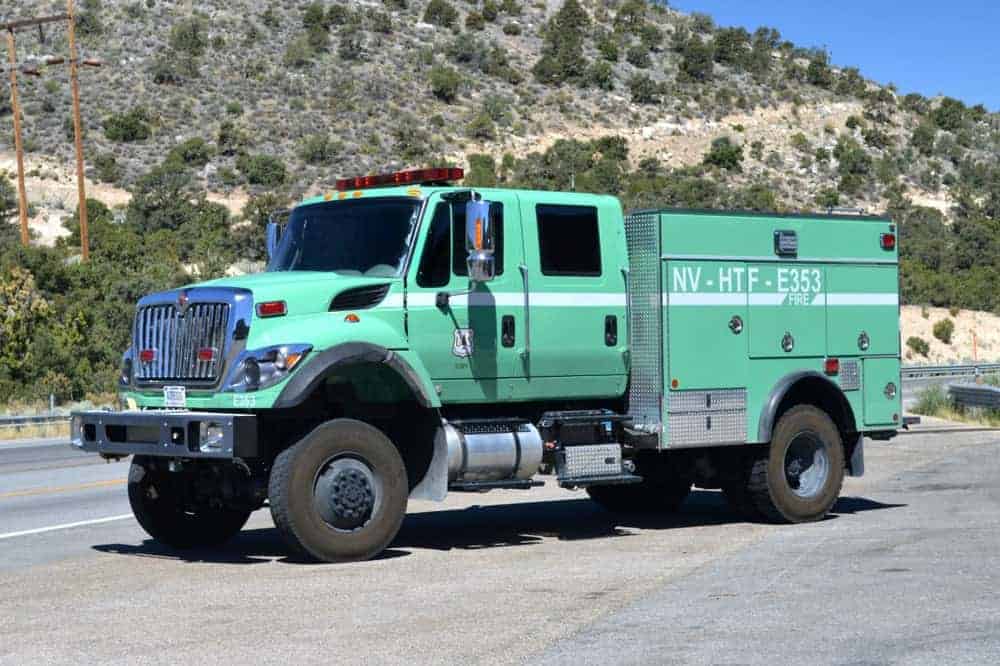The modern day fire truck is typically associated with blazing lights, blaring sirens, and the huge cascade of water. One of the biggest, most prominent indications of a fire scene is the super large size and red colored fire truck. What started off as a mere water pump placed on wagon wheels has now transformed into a proper vehicle carrying all the essential equipment like ladders, power tools and rescue gear as the vehicle moves from the fire station to the fire scene.
The term fire truck is often used interchangeably with another term that is ‘fire engine’ by quite a few people in different territories, when referring to the act of firefighting. However, this has become quite a debate nowadays because there are still many fire departments and fire services where people refer to separate and distinctive types of vehicle or fire apparatuses when they talk about fire trucks and fire engines.
So, is a fire truck the same thing as a fire engine or are there unique differences between the two?
Fire Truck vs. Fire Engine
Whenever there is a fire reported at any possible location, be it a restaurant, a residential building, or a factory, you are likely to see a large red vehicle, more like a four wheel drive that is constantly honking its horns, blaring its sirens and moving as fast as it can to the location of the fire scene.
As you move out of the way and perhaps, drive your car towards the side of the road in order to give space to the red vehicle, you might wonder to yourself or ask those who are with you, what that vehicle really is. Is it a fire truck or is it a fire engine?
Although both are firefighting specialized equipment or firefighting apparatus used by the fire departments all over the world whose primary purpose is to offer fire protection, they do serve different purposes.
Fire Engine
Initially, the word ‘engine’ was used exclusively to refer to a ‘pump’ which is basically one of the most important tools for getting a large water supply to a particular fire scene. Eventually, the term underwent a major transformation and is now called a ‘fire engine’ which is simply described as a rescue vehicle or a firefighting apparatus of the fire department that pump water from their large water tank.
Also less commonly referred to as a “pumper”, a fire engine is the first vehicle that you see arriving at a possible fire scene. A typical fire engine consists of a water tank, a water pump, hundreds or sometimes even thousands of feet of powerful hoses and some extra materials nozzles and tools in for the hoses to function efficiently and properly. In old school terminology, a fire engine was called a ‘triple combination rig’ since it consisted the three key elements that are a water pump, a water tank and huge hoses.
The water tank usually contains hundreds of gallons of water which is the main water source used by the firefighters to help extinguish the fire. They keep using this to create a powerful stream of water until they are able to connect to a fire hydrant which is water connection point that helps them tap into another water supply. Needless to say, fire hydrants are a very vital part of active fire protection.
Fire Truck
On the other hand, a fire truck is like an auxiliary vehicle that helps transport the team of firefighters from the fire station to the fire scene, along with all the necessary supplementary equipment. These typically include ladders like a ground ladder and an aerial ladder, first aid, and protective gear.
Sometimes, the trucks also carry breathing apparatus including a snorkel to help the victims of the fire. While the primary purpose of the fire engine is to effectively contain and extinguish the fire, the fire truck is more focused towards rescuing people from the fire scene, saving lives, ventilating the building or location, and providing any emergency first aid or medical treatment to the affected victims.
Since fires are known to be extremely unpredictable and have a tendency to spiral out of control, fire engines are immediately followed by fire trucks carrying ample emergency equipment including breathing masks, chainsaws, fans and strong lights. This extra precaution is extremely necessary given that an unforeseen situation occurs like a fire explosion or that there are people trapped inside the building.
The main distinguishing factor that separates the truck from the engine is that the former is the actual rig with a big ladder. This is what gives fire trucks their true distinction. It is specialized equipment that is called out for structure fires and similar situations that require extra manpower and emergency firefighting gear.
The History of the Fire Truck
There is no doubt about the fact that fires are as old as the entire human civilization which is why communities and societies have always felt the need to come up with organized ways to protect themselves from unpredictable fires.
Also, considering how the world itself and populations have expanded so rapidly with rural areas and urban areas becoming so densely-packed the need to come up with fire protection strategies at a civic level had increased a great deal. This was particularly evident during the formation of numerous American colonies when people realized that something had to be done to protect the new settlements from getting destroyed by these fires.
Water Pumps on Wagon Wheels
The first ever fire apparatus that came into existence was the pumps-on-wheels equipment which basically included a water supply pump that was mounted on to a wooden chassis. There was also a large lever attached to this framework whose main purpose was to provide a place to the firefighters to rest their feet.
Although pumps on their own had existed since Roman times, they proved to be slightly difficult when used to for the purpose of fire extinguishing. This is primarily because most of the early types of pumps simply spurted water than spraying it which made it quite challenging to generate an adequate stream of water. This equipment was called “bucket brigades” back then and was even used to put out fires in Europe.
Horse-Drawn Pumpers
Soon enough, as a result of the technological advancements post-Industrial Revolution, the pumps-on-wheels apparatus was replaced by horse-drawn steam pumper. Groups of horses were used to pull steam trucks in order to pump water at the fire scene.
This went on from the 1840s all the way until the First World War, especially in the United States. There were large horses that pulled heavy steam-powered fire trucks along with a team of three to four men who had to be present at the scene in order to operate the pump.
Gasoline Engines
While horse-led steam trucks did solve quite a few issues, there were still big problems faced by firefighters in terms of logistics. The large teams of horses had to be watered, fed and stable which proved to be quite time-consuming and costly.
With the advent of the 19th century, these horse-driven trucks were taken over by gasoline engines. From the First World War until the 1920s, gasoline engines were used to power the fire trucks. A gradual increase in efficiency was noticed by people as gasoline completely superseded the use of steam. These engines proved to be faster and more efficient than horse-drawn steam powered trucks because the water pumps were much better able to create a powerful stream of water.
Modern Fire Trucks
The fire trucks that you see now in the current modern age are mainly the result of ladder trucks that were developed in the first half of the twentieth century. These trucks were specially created because American cities were expanding both upwards and outwards rapidly and one of their most defining features during that century was the growth of the skyscraper. The civic fighters of the United States sensed an imminent need for a firefighting apparatus that was durable, effective and ensured ultimate protection. The fires were also more common at greater heights which strongly called out for a ladder truck.
A pivotal invention that incorporated the ladder technology was the “Hayes Ladder” which was very different from the previously used traditional kind of ladders. The main difference was that this one had the ladder mounted to the truck with a spring mechanism that allowed firefighters to raise or elevate the ladder at tall buildings.
This further allowed them to rescue people from upper-level windows and even enter the building from a particular height. This particular fire equipment gained significant popularity throughout the United States and the idea of a ladder mounted to the fire trucks was carried forward to the 21st century, resulting in the much-similar modern-day fire truck.
Different Types of Fire Trucks
Ever since the idea of using a fire truck was formulated for fire protection, it has undergone several transformations that have resulted in a variety of different types of fire trucks. Some of these are still used quite commonly while others have faced great decline in their popularity.
Conventional Fire Truck
This is a standard type of fire truck with an engine which has been mainly developed for firefighting operations. It serves the purpose of taking the firefighters to the fire scene as well as carrying essential tools, hoses and equipment to the scene along with a limited water supply.
The kind of tools carried by the conventional fire apparatus greatly on factors like the size of the vehicle and the type of terrain it has to handle. The latter can range from rugged or rough terrain to a smoother one.
Some of the most fire equipment includes fire extinguishers, ladders, breathing apparatus, hydraulic rescue tools, thermal imaging cameras and floodlights. They may even carry extra materials and things in regards to the cleanup or removal of hazardous materials from the fire scene.
There are also variations within the conventional types of fire trucks where some even contain a fixed deluge gun, also referred to as a ‘master stream’. The primary purpose of this gun is to release a heavy stream of water when it is directed to a particular spot. When this onboard water stream runs out, the engine is connected to external and more permanent sources of water such as fire hydrants or water tenders.
Pumper Truck
These are one of the most commonly used fire apparatus by most fire departments and are also often called ‘triple combination pumpers’. They are similar to wagons and are typically fitted with a hose body, fire pump and a water tank. A pumper is seen at any fire scene where it is basically used to provide firefighters with important tools to help contain the fire and also to save the victims.
Turntable Ladder Truck
This is a special aerial apparatus that makes use of a large telescopic ladder in order to gain access to those areas that are at quite a height. The unique name of this fire truck comes from the fact that there is a turntable present at the back of the truck which mounts a large ladder. The turntable allows the ladder to pivot which makes it easier to spray water in the desired direction.
Many modern day turntable ladders come with a built-in water function where some consist of a pre-piped waterway that extends all the way across the ladder while the others have an on-board supply reservoir. They also often carry out other functions by holding a number of additional tools like an aerial ladder, onboard pump, fire hose and a quad.
Heavy Rescue Vehicle
As the name suggests, this type of fire apparatus is specialty equipment that is used for technical rescue operations. It is sometimes referred to as ‘rescue squad’ which is one of the reasons why you will often see heavy rescue vehicles not only at a fire scene, but also in massive traffic collisions, swift-water rescues and in building collapses.
Tiller Truck
A specialized ladder truck, the tiller truck is a firefighting apparatus that has a turntable ladder attached to a semi-trailer truck. It is like a hybrid version that uses both trailer and tractor. Interestingly though, it has two drivers, along with separate steering wheels for both the front and rear wheels.
This division between the two gives the tiller truck the incredible ability to maneuver quite efficiently, which is one of its main features. This results in sharper turns, especially in maze-like roads and narrow streets. Another great feature of the tiller truck is its length that often crosses over 50 feet. This creates additional space in the truck for carrying fire-related necessary tools and equipment.
A variation of the tiller truck is tiller-quint which is a kind of truck that has an added on-board water tank fitted in the main vehicle.
Wildland Fire Engines
The main purpose or intention behind Wildland fire engines is to be able to maneuver on rough, challenging terrains, coupled with a high clearance for suspension and wheels. These are types of fire trucks that are used instead of the regular conventional trucks to combat fires in difficult hills and mountains.
Most of these vehicles feature a four wheel drive that performs really well in rough terrain areas. Compared to traditional types of fire apparatus, Wildland fire engines have the ability to pump water while driving that greatly allows them to run attacks on vegetation fires in order to prevent them from spreading rapidly. Vegetation fires can have a devastating tendency to spread really quickly that ends up destroying far too many plants, crops and trees. This is why Wildland fire engines are ideal for firefighting in such areas.
Quints
This fire apparatus is one of those misunderstood fire truck with a bit of controversy attached to it. Quint carries out five key functions, two of which are that it carries a pump as well as an aerial device on a single vehicle. It further performs other tactical firefighting functions such as: providing master stream to fire fighters including pump and hose, giving them an access to elevated areas with the help of aerial devices and ground ladder and lastly, ensuring a continuous supply of water through its water tanks and pumps.
A-Wagon
Commonly referred to as a hazardous materials apparatus, A-Wagon is a special vehicle that is used to fight brush fires and grass fires. The specialize name of this fire apparatus is due to the fact one upon a time, these vehicles consisted of separate auxiliary motors that released water from the pump. This suggests that the motor could allow the vehicle to roll and pump both at quite the same time.
Water Tenders
These are often described as mobile water supply apparatus that are primarily designed to pick, transport, and deliver water to emergency fire scenes. Most of these vehicles have quite a basic and simple design and they usually don’t come with a pump since their main function or purpose is to have a proper water supply. Water tenders are not meant for off-road use since they are a two-wheel drive and are generally operated by one or two firefighters.
Main Components of a Fire Truck
When you look at a fire truck from afar, all you can really see is the bright red color, elevated ladders mounted on the main department of the vehicle and perhaps, water pumps generating never-ending sprays of water. However, if you look closely, or perhaps, ever get an opportunity to sit inside a fire truck, you will realize that is apparently simple and huge vehicle has so much more to it.
A fire truck consists of some key elements and components, each of which is extremely vital and serves a very important and a unique function.
These are some of the most basic and most important components of a fire struck.
Gripped Steps
Every fire truck has a series of gripped steps that allow firefighters to move around the vehicle with ease and convenience.
Flood Lights
These are high-intensity artificial lights that provide a great source of illumination especially during the night when there is a fire scene in the dark.
Reference Books
As they say, true learning never stops and similarly in this case, most fire trucks are equipped with references books on firefighting that firefighters can take help from, or refer to in times of confusion or when they want to make sure of something.
Ventilator Fans
As the name suggests, these are used at the fire scenes to circulate air and provide adequate ventilation. They basically create a movement of the air in order to disperse fumes from the fire.
Aerial Ladder
This is essential for commercial fires where it can reach up to 105 feet. It often comes with a master stream hose and the ladder is raised towards the building with the help of a hydraulic piston rod.
Hoses
These are large flexible hollow tubes that are mounted on the top of the fire trucks and are able to release a thousand gallons of water per minute.
Pump Panel
Another important component, the pump panel helps control or restrain the flow and pressure of the water-spraying hoses. The fire fighters need years of practice in order to be able to operate the pump penal efficiently and effectively.
Air Tanks
These are generally portable, easy-to-use units that allow you to store in compressed air which is much-needed especially at a fire scene. Firefighters can also fill these tanks with breathing gases that can provide immediate aid to the fire victims.
Radio Systems
Needless to say, radio systems are one of the most essential pieces of public safety equipment. These are in-built within the fire truck vehicle and are used to communicate with the backend team at the main fire department.
Now that you know the main differences between a fire truck and fire engine, you are likely to be able to tell the two apart the next time you see them at any fire scene!

